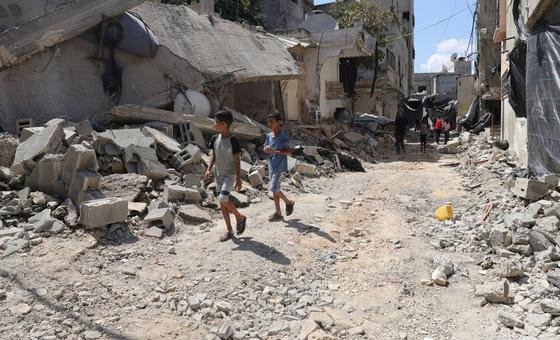‘The Gaza War: Anticipated Socio-Economic Impact on the State of Palestine’The title report was produced by the United Nations Development Program (UNDP) and the United Nations Economic and Social Commission for Western Asia (UNSCWA).
The study warns that it will not be possible to return the Palestinian economy to pre-war levels without lifting economic sanctions and investing in reconstruction and development. For this, only humanitarian aid cannot be relied upon.
The report reviews the immediate impact of the current violent conflict in 2025 and also predicts what the situation will be like by 2034, a decade after the start of the war.
Damage to development
UN Commission Executive Secretary Rolla Dashti said their assessment would serve as a wake-up call to draw attention to the destruction of millions of lives. Decades of development efforts are being erased.
“The time has come for an end to the bloodshed and suffering that engulfs our region. “We must find a lasting solution, where all people can live in peace, in dignity and enjoy the benefits of sustainable development, and where international law and justice are paramount.”
Estimates show that, compared to a situation without war, GDP is expected to decline by 35.1 percent in 2024. Unemployment could rise to 49.9 percent.
Poverty and suffering in Palestine is also reviewed, using the Multidimensional Poverty Index. The possibility of resettlement in Palestine after the implementation of the ceasefire is also assessed.
The report shows that poverty in Palestine could increase by 74 percent by 2024, affecting 4.1 million people. Of these, 2.6 million people have recently fallen into poverty.
Three scenarios of economic recovery
UN experts believe that there are three different scenarios for the restoration of Palestine: no restoration, partial restoration or no restoration without restrictions.
In the absence of any recovery, UN experts believe that humanitarian aid funding will remain unchanged and at current levels. However, restrictions on Palestinian labor and revenue payments to the Palestinian Authority will remain in place.
In the partial recovery scenario, $280 million in annual humanitarian aid funding is projected, although restrictions on labor and revenue will remain in place. This will meet the needs of the people but will not lead to long-term economic recovery and will lead to marginal improvement in poverty and unemployment.
In a resettlement scenario without restrictions, restrictions on Palestinian workers would be lifted and revenues would resume for the Palestinian Authority.
In addition to $280 million in humanitarian aid, $290 million will be allocated annually to recovery efforts, which will increase productivity by one percent per year. This will help restore the economy and put Palestinian development back on track.

